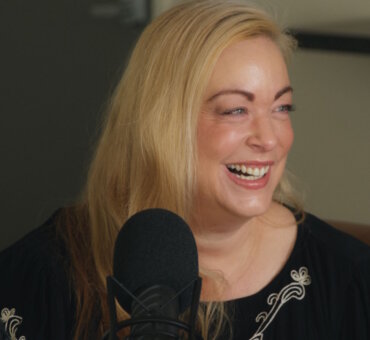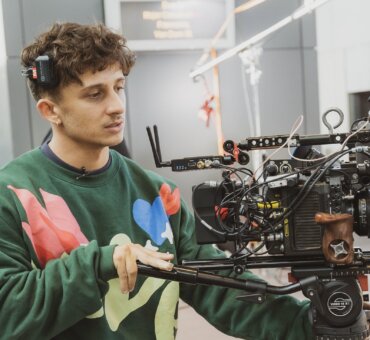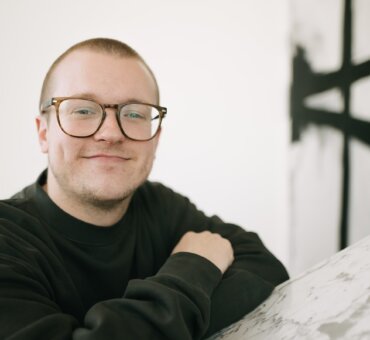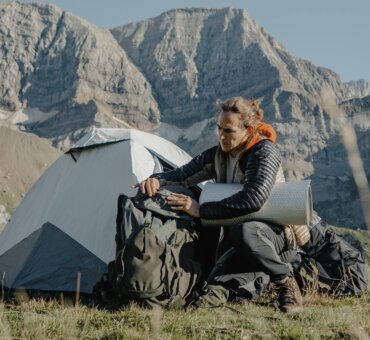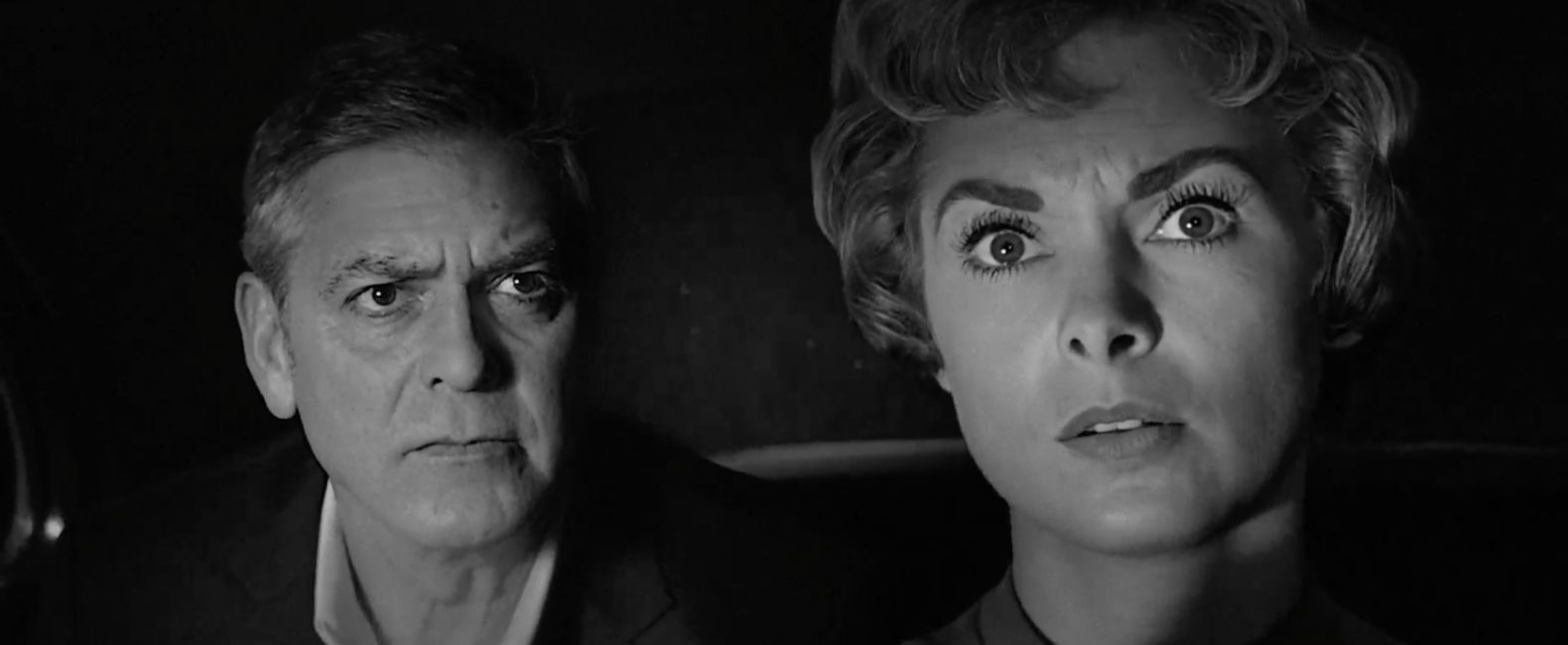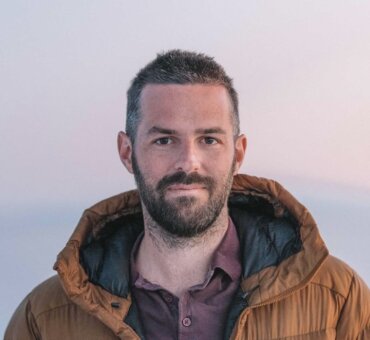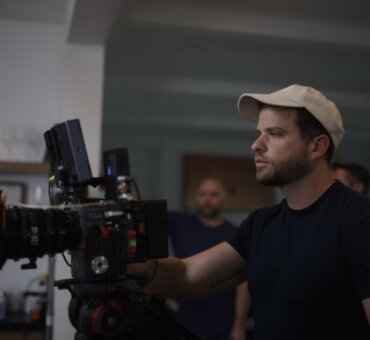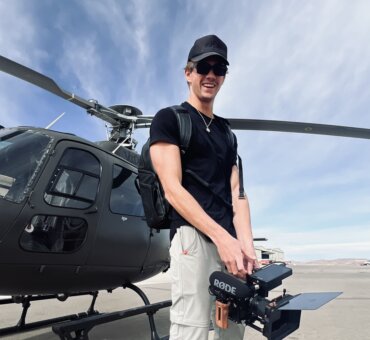Unlike so many other aspects of filmmaking, what happens in the editing room is as close to magic as you can get. Close to magic, because how exactly do you explain what it is that makes a person want to keep watching something? For Chris Franklin, this magic happens when he’s living and breathing the narrative:
“When I’m working on my own projects, I find the point where I can actually step into it, where I feel like I’m inside it as opposed to just outside looking at it,” he told us. “A good film allows you to step in, and everything else falls away around you. It’s incredible when that happens.”
Chris is the founder of Big Sky Edit, on the board of AICP, and has received Cannes Lions Awards, Webby Awards, Emmy Awards, and an Oscar nomination. He’s edited spots for American Express, Verizon, Nikon, Mastercard, and hundreds more. He’s achieved so much success because of his mindset, and how that mindset is baked into his process. In our conversation, we took a deep dive into his views on editing, the psychology of the craft, and why “filling your well” is the most important thing you can do as an artist.
Here’s Chris Franklin.
Musicbed: Is there a part of the editing process you love the most?
Chris Franklin: I look forward to getting through the dailies and having everything organized, so I can actually start assembling. At the beginning of the process, you get handed 15 hours of footage for a 60-second spot. Then, you have to start working that stuff down. It’s a painful part of the process. For every hour of footage you have, you’re going to be dedicating about four hours to get it to a point where you can actually start working.
Then, you get to the point where everything is done and you can start editing and building. You can’t ignore that part of the process, because if you try to start cold and start building from what you have, you’ll wind up in the weeds. You won’t know what you’re doing. It’s about culling, culling, culling, and breaking it down.
I love all the steps of the process because you get into a different zen mode with each one. With dailies, you let it start soaking in. Then, you absorb it. And then, once you have all that stuff, that’s when your unconscious starts working. You’re walking down the street and think, “Wait a minute. I could try this, this, this, or this.” You’ve learned the footage, and you start getting excited about the other steps of the process, where you’re trying to pull out all the nuggets and make it, hopefully, a well-received gem.
Is there anything you can do to train your unconscious mind?
It’s something that has to happen naturally. You have to let it happen. I also think it points to the makeup of a person. For example, not everybody can write. If I sit down and start reading a book and hear someone’s voice in a book, I’m thinking, “Wow. Where the hell did they develop the ability to write that way?” That’s something in the makeup of the person. You can teach someone the basics of writing, or you can teach someone the basics of editing or building a story, but if it’s not in you, I don’t think the mechanics click in the same way.
For every person I’ve seen succeed, who had it in them, I’ve also seen a person who mechanically understood what they were doing, but it just wasn’t there. They developed frustration. It’s hard. You’re sitting in front of a blank page, in front of a blank timeline, and trying to fill it. You’re thinking, “Oh, crap. Where am I going to go with this?” You never lose that fear that this might be the project that takes you down. And I think that’s good because it motivates you. It sparks you, keeps you on your toes. You’re never relaxed, thinking, ‘Oh, yeah. I got this. I know how to do this.’
Once you think you have it nailed and you know this stuff inside and out, you’re dead. You’re always going to discover something new. Every time you’re working, you’re going to think, “I didn’t realize that was going to do this or this was going to do that, just by juxtaposing a couple of shots or putting a piece of music against it or adding sound effects.” There’s always something to learn. If you fall into the situation where you really think you’ve mastered it. It’ll take you down. It always will.
Before beginning your career, did you notice the way a film was edited? Or did you just know you liked the movie you were watching?
That’s a good question. I think it depended on the edit. When I was a kid and watching movies, I always responded to moments. I look back at them now, and it’s interesting because all that stuff feeds your “well.” You put all that stuff in and that’s the stuff you draw on whether you realize it or not. There are things I’ll do in projects I’m working on, and I’ll think, “Why do I respond to this so well? Why did I get to that point?” I look at it, and then all of a sudden I’ll recognize a movie or spot that I really loved.
Everybody draws from something, but you realize the things you responded to when you were young came down to how it was put together. A big film for me when I was young was Mike Nichols’ The Graduate. I’ve seen that movie, I don’t know, 25 times. It’s beautifully put together. And everything I responded to in that movie is the dynamics of how things are happening within scenes. Sam O’Steen cut it and it’s incredible what he was able to put together. You look at these films and realize you’re responding to them, and absorbing them. And then, you throw it back.
As you start understanding the technical side of it, you respond to edits and how a film is put together. Now, if I start a movie, I can tell whether I’ll like it or not in the first five minutes. But, I’ll step back and just watch how it’s put together. You start watching the over-the-shoulder shot to see if the actor’s out of sync or you start watching for mistakes, trying to see what somebody had to go through to try to put it together. Anything that somebody edits, they pour themselves into. And if it’s not successful, that’s painful, because they spent a year of their life on it.
It’s interesting because most people may never notice those details you’re talking about.
Absolutely. As I got better, I realized that you really are manipulating an audience. You’re telling them where to look, you’re telling them how to feel. Even in the sense of dealing with sound, you can have a beautiful piece of footage, and you put sound against it, and people start seeing other things in the frame. If it’s a wide shot and it has trees in it, all of a sudden you put the sound of leaves moving, and people are going to look at the trees. They’re going to place themselves there.
When I’m working on my own projects, I find the point where I can actually step into it, where I feel like I’m inside it as opposed to just outside looking at it. A good film allows you to step in, and everything else falls away around you. It’s incredible when that happens.
The movies and TV shows we talk about, we continue to talk about them because we developed a response to it as soon as we saw them. Here’s a good example. David Chase has a prequel to The Sopranos coming out, The Many Saints of Newark, which I’m really excited about seeing. I’m watching a promotion for it, and they’re showing clips of Edie Falco and James Gandolfini from the original Sopranos. As soon as I see that footage, I get a response. My fingers start tingling because it’s so good. That’s a situation where you feel like you’ve stepped into the story. They pulled you in, and really allowed you to live within it. And that’s incredible.
How does a story get there?
It’s how the performances are put together. There’s a quote I love by Philip Seymour Hoffman, where he was being interviewed by Elvis Mitchell. I’m paraphrasing, but Elvis asked, “When you’re acting in the theater, who are you playing to?” And he said, “In theater, I’m playing to the director, because he’s protecting me. He’s guiding me.” Then, Elvis Mitchell says “So, when you go into a film, you’re also playing to the director?” And Philip Seymour Hoffman said, “No. I’m playing to the editor. They’re the person who’s going to shape what I’m doing. I have to make sure that they understand where I’m going so that they can put it together.”
When I heard that, I thought it was incredible. The thought process going on in his head is that somebody’s going to be looking at this over and over again, become intimate with it, and he wants to make sure they show him in the best light.
It also explains a funny phenomenon in editing where you get so intimate with the footage, you start knowing the people. If you’re cutting documentaries with real people, you’re watching hours of footage and you get to know these people really well—their cadences when they speak, their insecurities, how they react to situations, what their eyes do, how they respond, the dynamics of how they talk, and how they move. It’s an uncomfortable sensation because you know so much about them and they have no idea who you are.
At that point, you realize how you’re studying people. One of the best exercises you can do in terms of understanding people and movement for editing is to go out to dinner with a bunch of people. Look at the people who aren’t talking, watch them closely. Don’t watch the person who’s talking. Watch the people who aren’t talking, because they’re responding.
So you study the person reacting authentically, rather than the person talking who’s almost like the “performer”.
Yes. And everything we do in editing is about building into a response. You can always have a talking head, but how are people in the story responding to the person who’s talking? It’s an immediate response. There’s no filter going on. Somebody says something shocking and you’re going to react. They may start thinking, “Wait, maybe I’d better backpedal.” But you’re always going to have that initial response. That’s the fascinating thing about editing: understanding behavior. You watch. That’s really what you do all the time. You watch.
Does this kind of studying also inform how an audience will respond to a story?
That gets a little more complicated, understanding how an audience responds to a story. That’s why it’s so important to make sure you “fill your well.” Have patience. Read, listen, and watch as much as you can. Read books with well-told stories, and understand why those stories work. Watch things that are good and bad, because everything is valid. Try to understand why it’s good or why it’s bad, and why you respond to it. Learn from that.
Everything is a story, right? Growing up with music, I could listen to a three-minute song that I love over and over and over and over again. Why does that hit you a certain way? Why can you listen to it and never ever get tired of it? Try to analyze what is happening in it; break it down. It’s the construction of a piece that allows for a response you can’t turn away from. It’s because it’s an incredible piece of creative output. It’s magic. It’s truly magic.
Read more editing secrets from legendary editor Walter Murch, or our conversation with the visionary editor behind ‘First Man’, Tom Cross.


